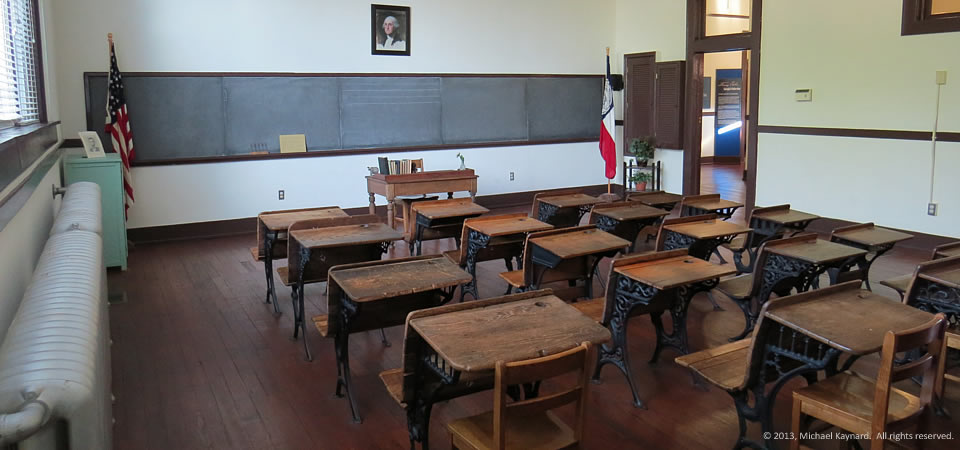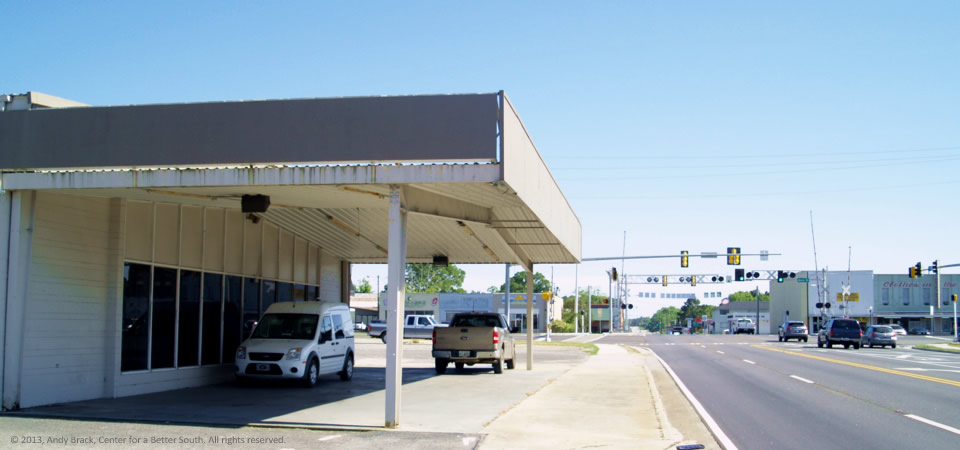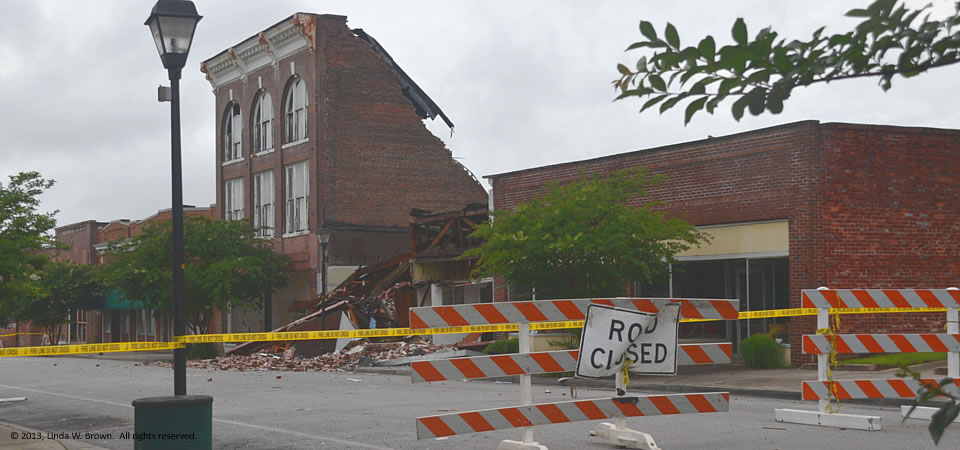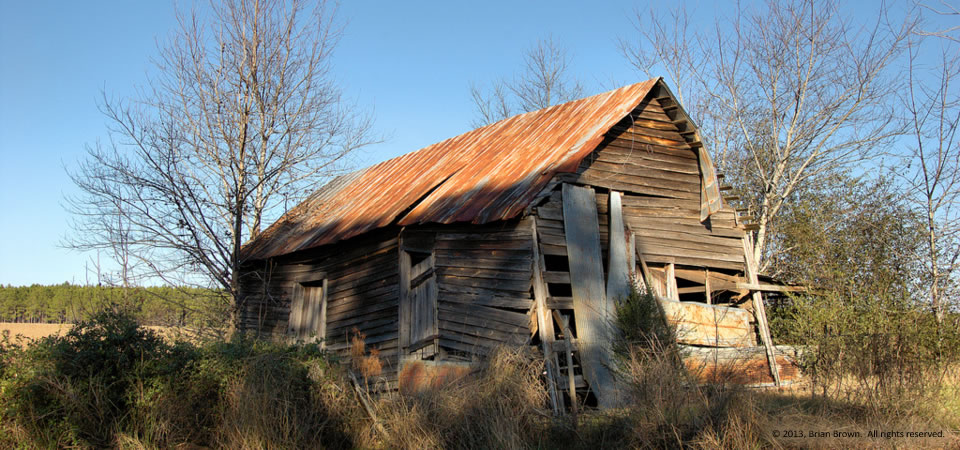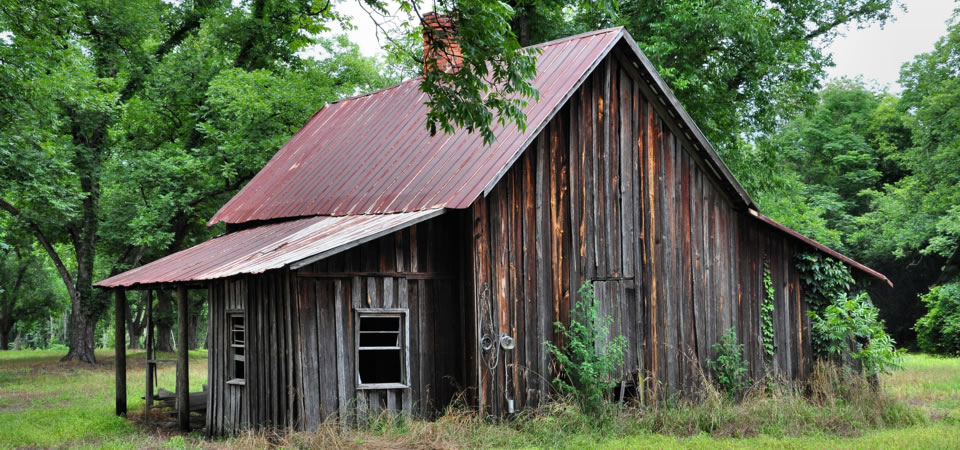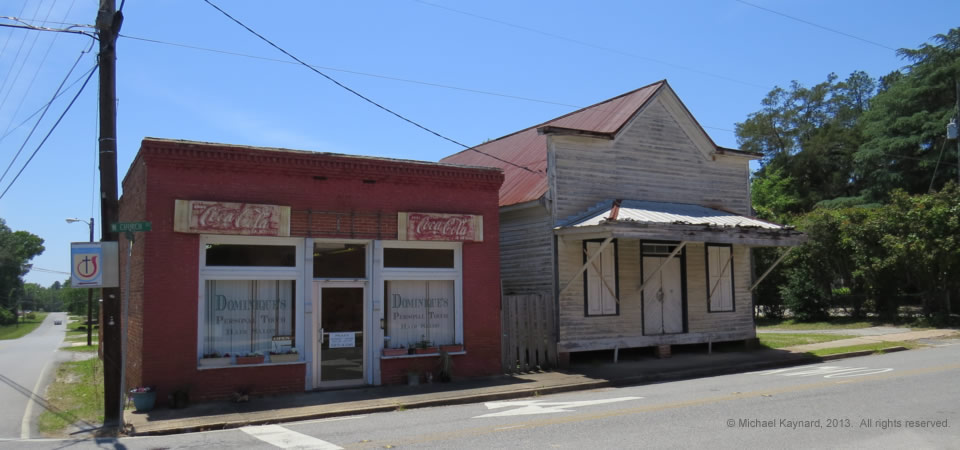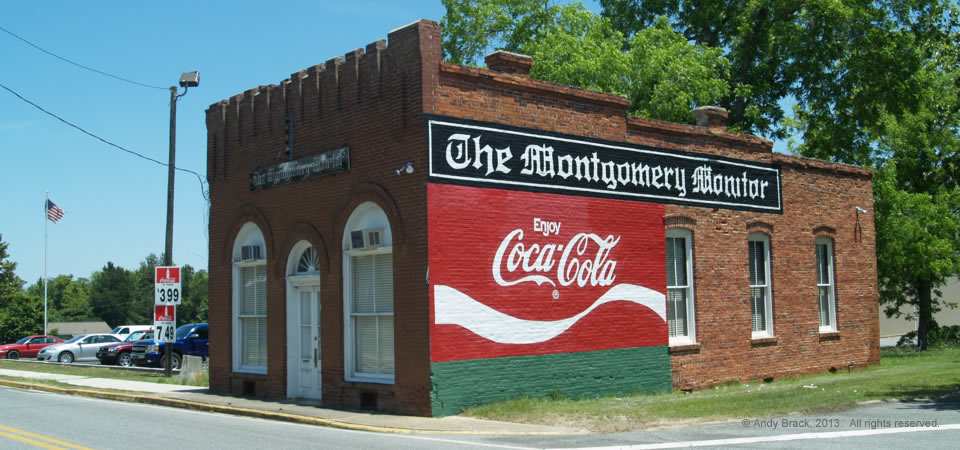Former President Jimmy Carter went to school in this Plains, Ga., classroom at Plains High School, now the museum and visitors’ center at the Jimmy Carter National Historic Site.
To our knowledge, this is the only federal presidential historic site in the Southern Crescent. All over town, it’s easy to see commonalities with other rural communities across the Crescent — small-town life dominated by agriculture and a close-knit community.
Photographer Michael Kaynard noted, “There is a block of tourist businesses just down from the train depot Carter used as his campaign headquarters. Other attractions include his boyhood farm, Plains High School, Billy Carter’s gas station, Rosalynn Carter’s family home and the private Carter compound. Some of the land is being used for agriculture but it would be bypassed except for its ties to the President and his family.”
Plains, whose public school system was absorbed into that of nearby Americus and Sumter County, had 776 people in 2010, according to the Census. Three in five residents are black, with whites comprising almost all of the rest. About a quarter of the population lives below the poverty line.
- More about Plains.
- Learn about the Jimmy Carter Library and Museum in Atlanta
- Learn about the Carter Center in Atlanta
Photograph taken May 15, 2013, by Michael Kaynard, Kaynard Photography. Copyright 2013. All rights reserved.


